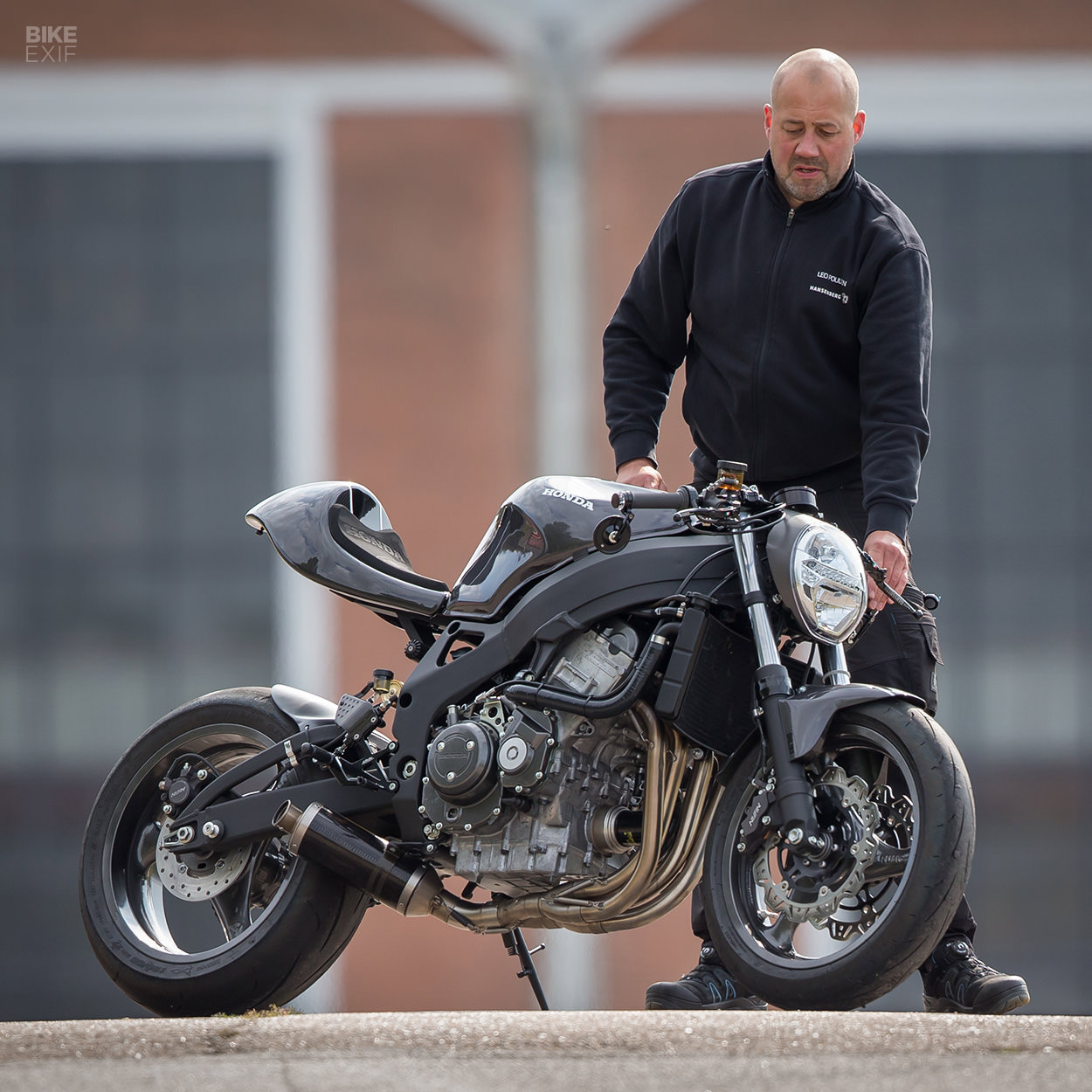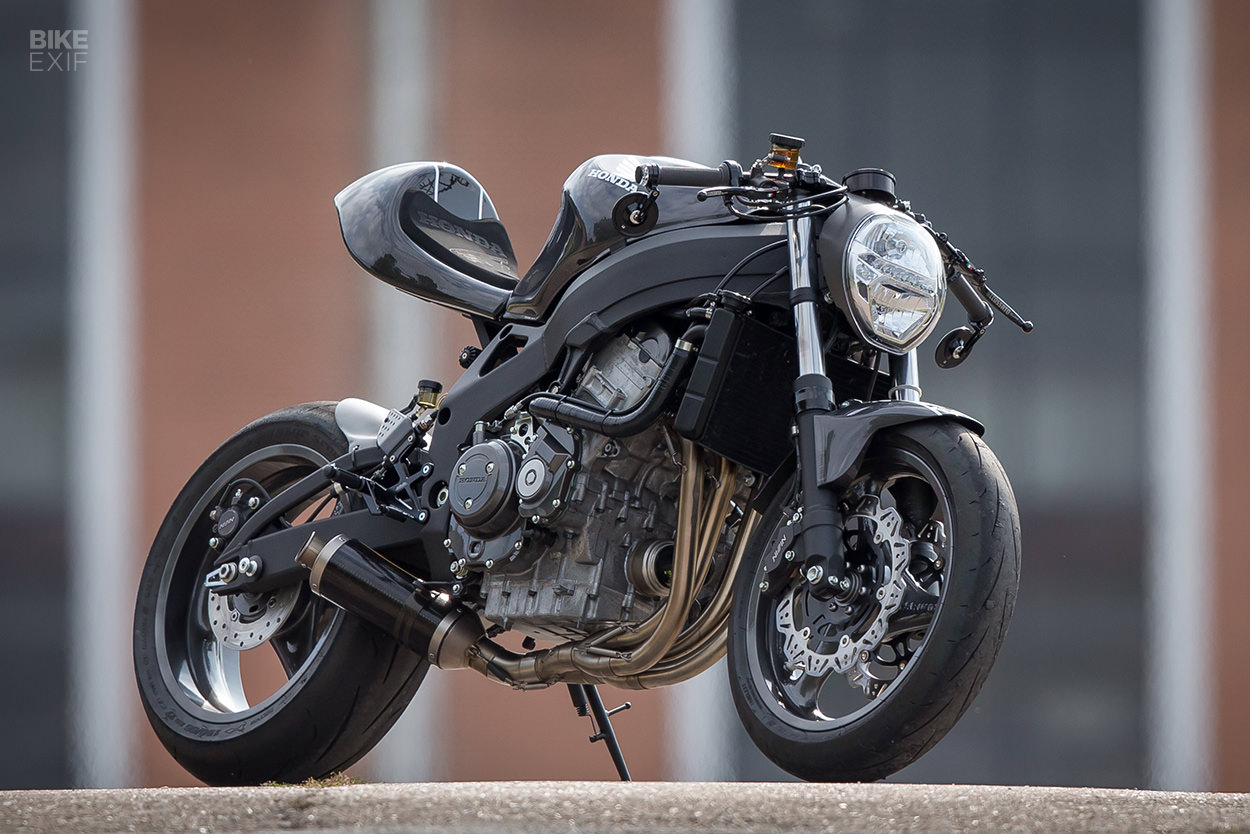
We’ve learnt to never underestimate garage builders. After-hours projects are usually executed with little money, but an abundance of time—and that sparks creativity and ingenuity.
This home-built cafe racer is sharp and minimalistic, but it’s also a bitsa of the highest order. Using a crashed 1996 Honda CBR900RR Fireblade as a donor, builder Leo Poulsen built it up with a mash up of parts that’s borderline genius. Oh, and it’s the first build out of his home garage, too.
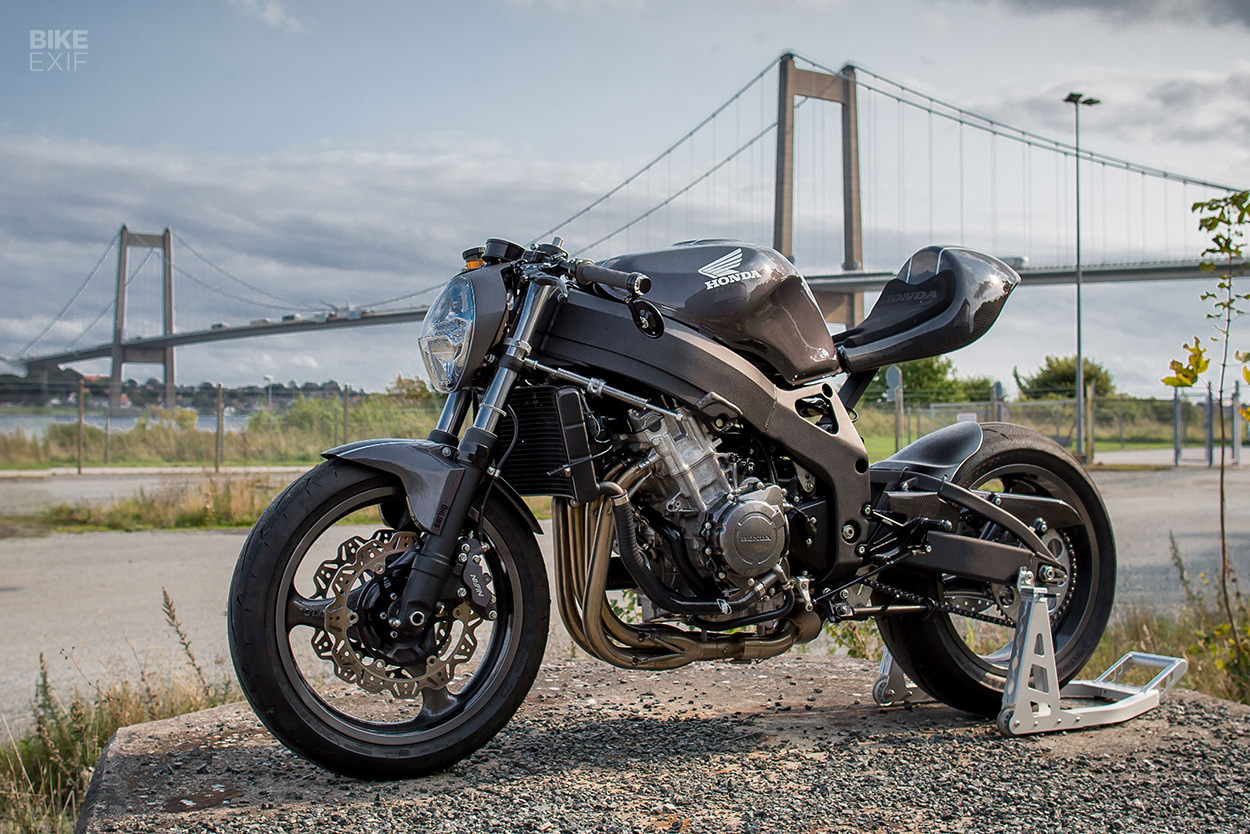
Leo started out as a car mechanic back in the day, before working as a motorcycle mechanic, and later workshop boss. Now he’s passing his skills on to the next generation at a technical college, while wrenching on bikes at night, in his 30-square-meter home garage in Jutland, Denmark.
“Working with bikes in the late hours is like therapy for me,” he says. “Working in my workshop, good music on the radio and a cup of coffee and all the difficulties of the day seem to disappear.”
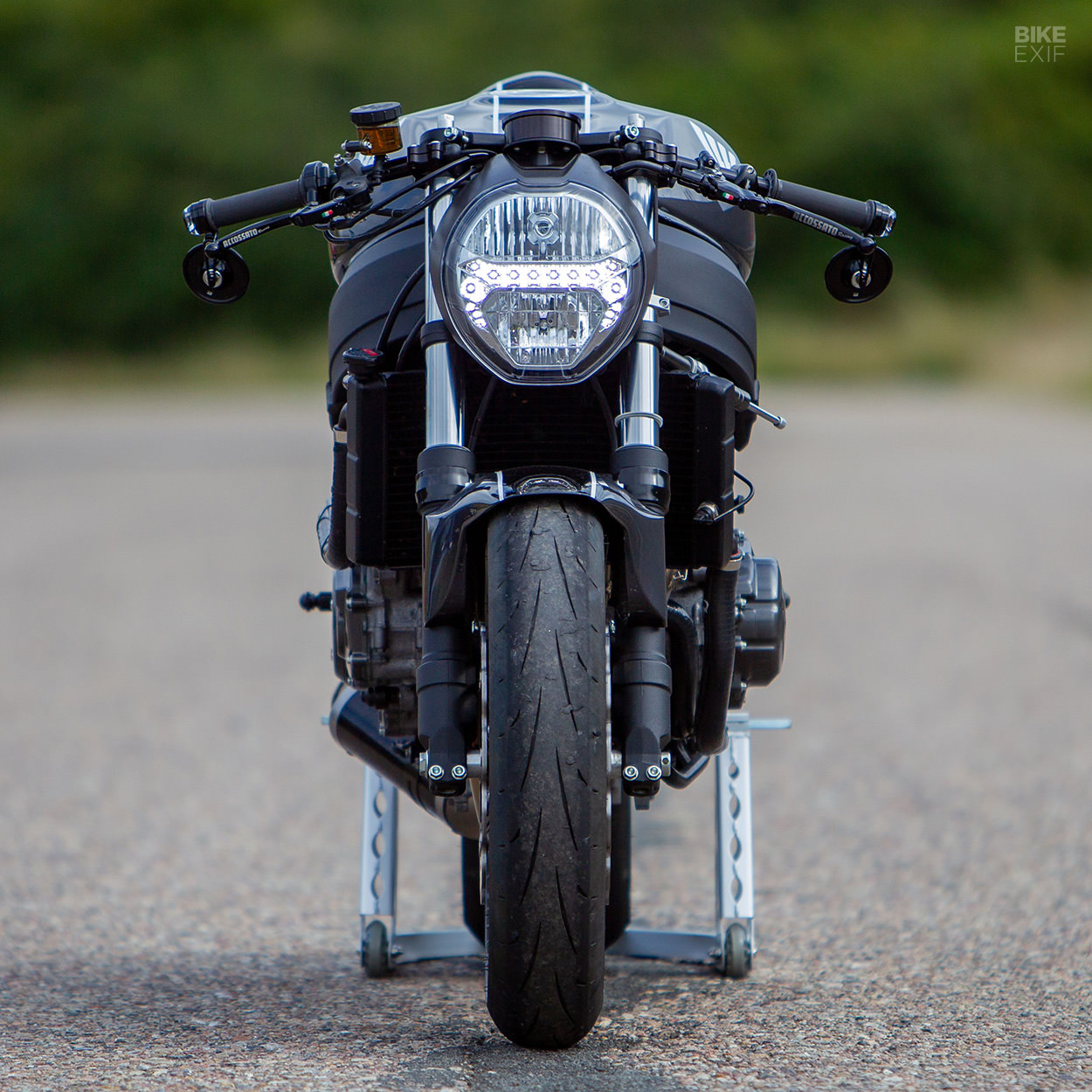
The 1990s Fireblade is an unlikely donor for a cafe racer, but Leo reckons the principles are the same. “This is my point of view on a modern cafe racer,” he explains, “trying to be true to the spirit of the original cafe racers of the sixties. Making a stock bike lighter, faster and of course cool looking…all of this inside a reasonable budget.”
“The goal of this project was to make a bike usable for an everyday ride, and still capable of doing a decent lap time on an occasional track day.”
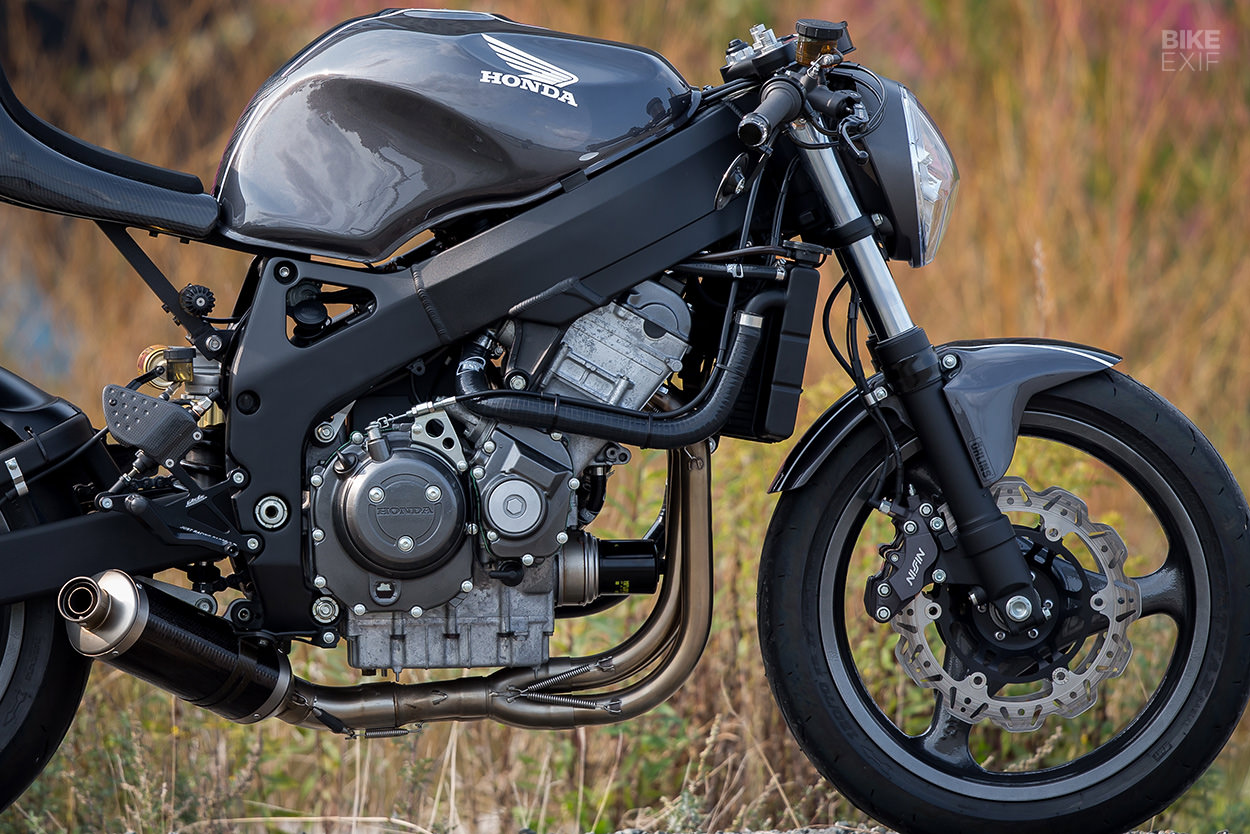
Most of the parts on Leo’s Fireblade are second hand bits from other bikes, which have been refurbished or modified. The paint work and some of the suspension upgrades were outsourced—but the rest was done by Leo, or with help from friends that had access to things like laser cutting and powder coating.
The front forks are stock on the outside, but were rebuilt with internals from a newer Fireblade, plus a bunch of Öhlins parts. It’s a trick setup too, with an alloy housing, Teflon bushings and a low friction spring. The rear shock’s an Öhlins unit from an Aprilia RSV Mille, re-sprung and re-valved to match the bike, and the steering damper is from a Kawasaki Ninja ZX-6RR.

The wheels are Marvic magnesium units with an interesting backstory. “I bought them from a guy, who bought them from a guy, who should have raced them on a VTR1000 SP on the Isle of Man,” says Leo. “But apparently he didn’t, because they didn’t fit his VTR… and that brought them to me.”
“Due to the doubtful history, I had them refurbished at a specialist in the UK, who blasted, crack tested, acid primed and powder coated them.”

Leo refurbished the stock brake calipers, then added EBC Vee-Rotors and braided stainless steel lines from Goodridge. He also added Accossato brake and clutch controls, Walter Moto rear sets, and one-off brackets for the fluid reservoirs. And all the spacers and bushings for the brake lines have been cut from carbon fiber tube.
Up front is a second hand Ducati Monster 1200 headlight sourced via eBay, complete with an LED daytime running light. It’s mounted on a laser-cut bracket that also holds the Motogadget tachometer, and the bike’s top yoke has been machined down so that it all integrates neatly.
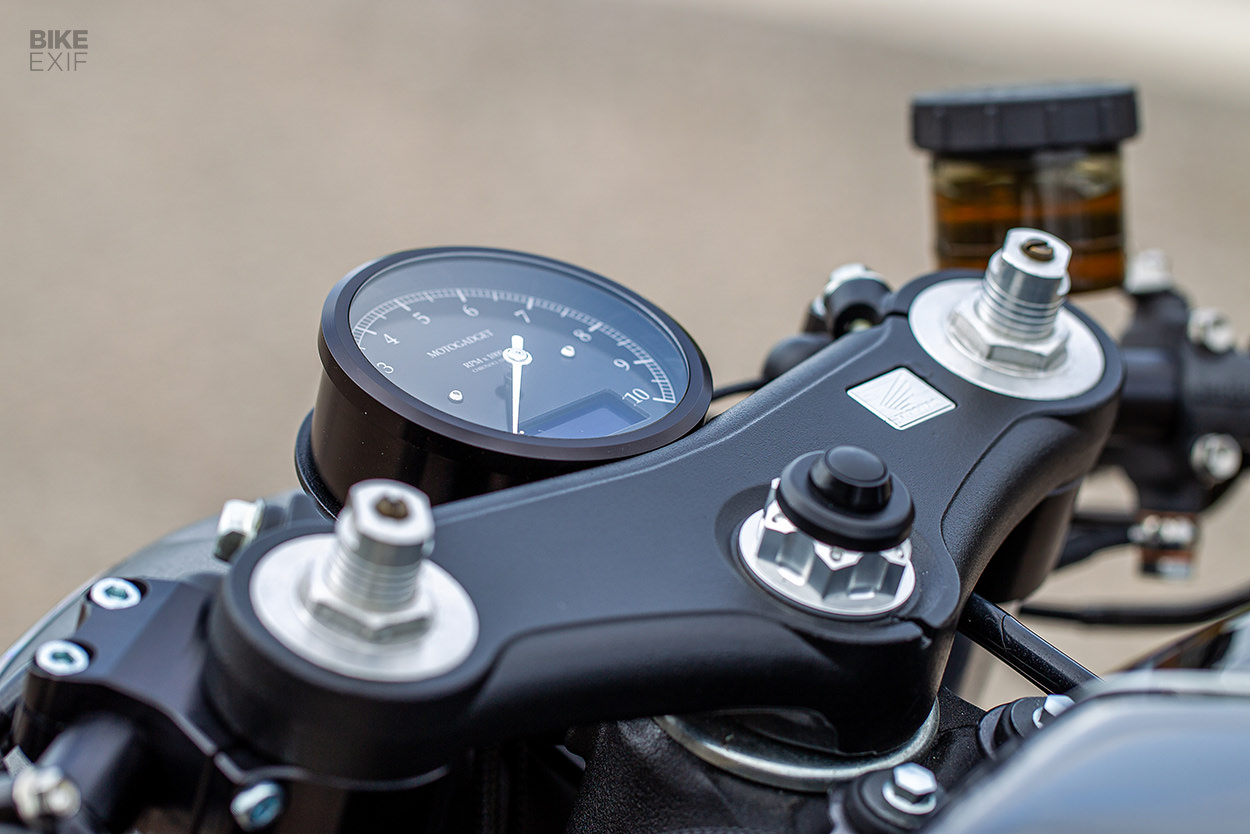
Other cockpit upgrades include TRW clip-ons, mated to Motogadget bar-end turn signals and mirrors. Leo rewired the bike around a Motogadget mo.unit blue controller, and packaged all the important bits in a custom-made box above the crankcase. That let him slim the switches down to a single three-button Motone cluster.
“I always liked the clean look of a race bike handlebar,” he says, “and the three button unit is as close as it gets to that look. Thanks to the amazing possibilities of the Motogadget mo.unit, and some upgraded hydraulic brake light switches, the daytime running light can be turned on with a little dab on the brake pedal.”
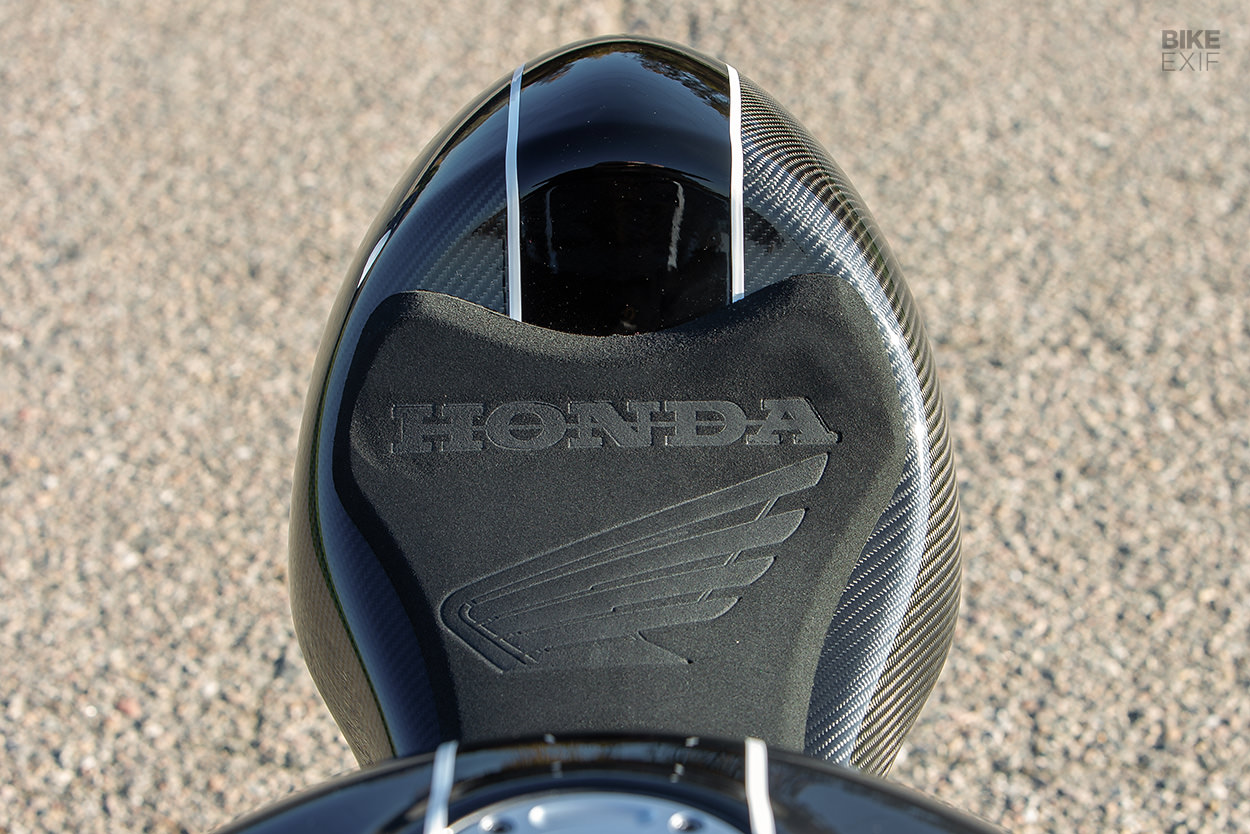
The Fireblade’s fuel tank survived the crash that originally sidelined it, but the rest of the bodywork is gone. Out back, Leo sourced a carbon fiber tailpiece for the Norton Dominator SS, from Zero Limits Carbon. It’s been finished off with an embossed race pad, and sits on a custom-made aluminum subframe.
With 130 hp on tap and famed Honda reliability, Leo left the motor alone. It was simply checked, serviced, dry ice-cleaned, and then upgraded with a Factory Pro Evo gearbox shift kit. It wasn’t repainted though; a deliberate move to retain a measure of patina, and to let the engine cool itself “as intended by Honda.”
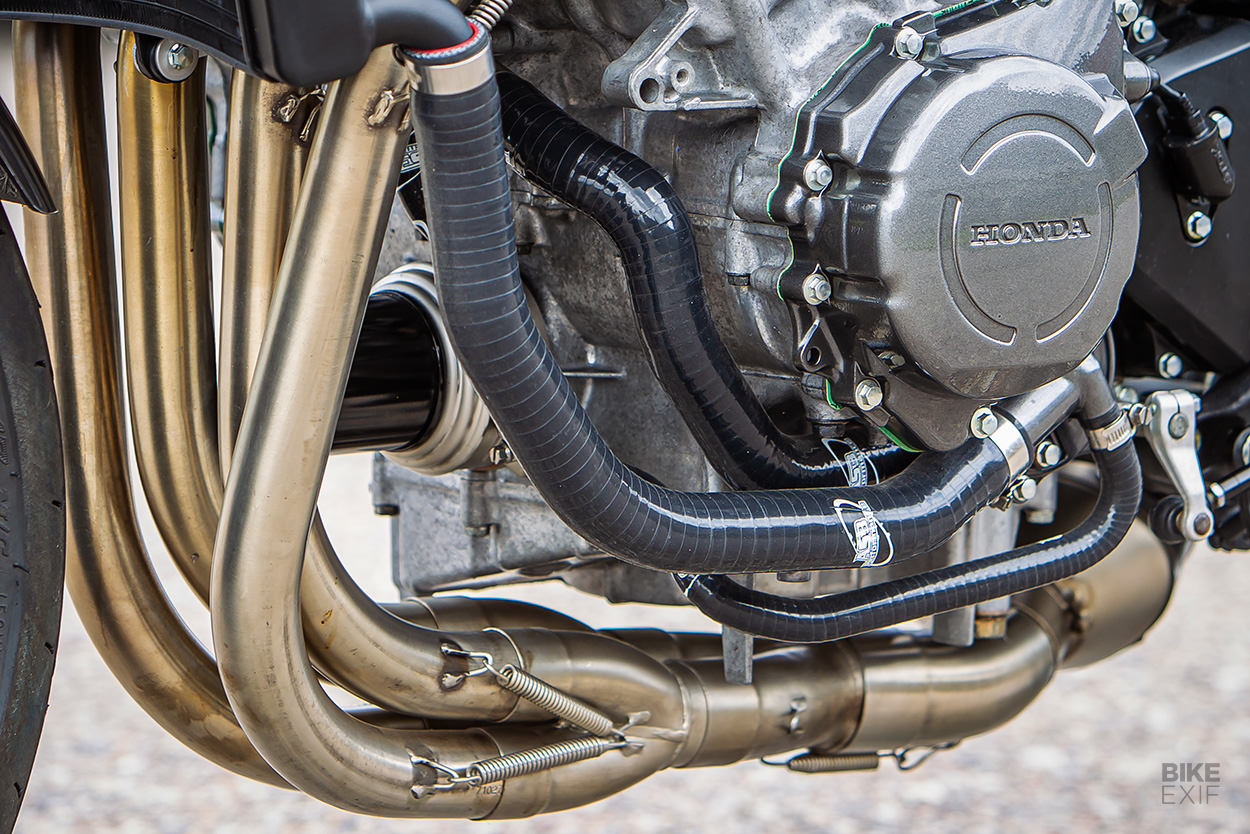
The exhaust system is a combination of race headers that were on the bike when Leo got it, and a titanium and carbon muffler from a Yamaha R6. The headers were in a bad state, so they were glass blasted, polished and then sanded back to the original finish. New springs and a hand-made bracket hold everything together.
Leo left no stone unturned, and the Honda’s fully loaded with custom spacers and bushings, upgraded hardware and new bearings and seals. A fresh coat of paint is complemented by semi-gloss powder coating on the frame, subframe and swingarm.
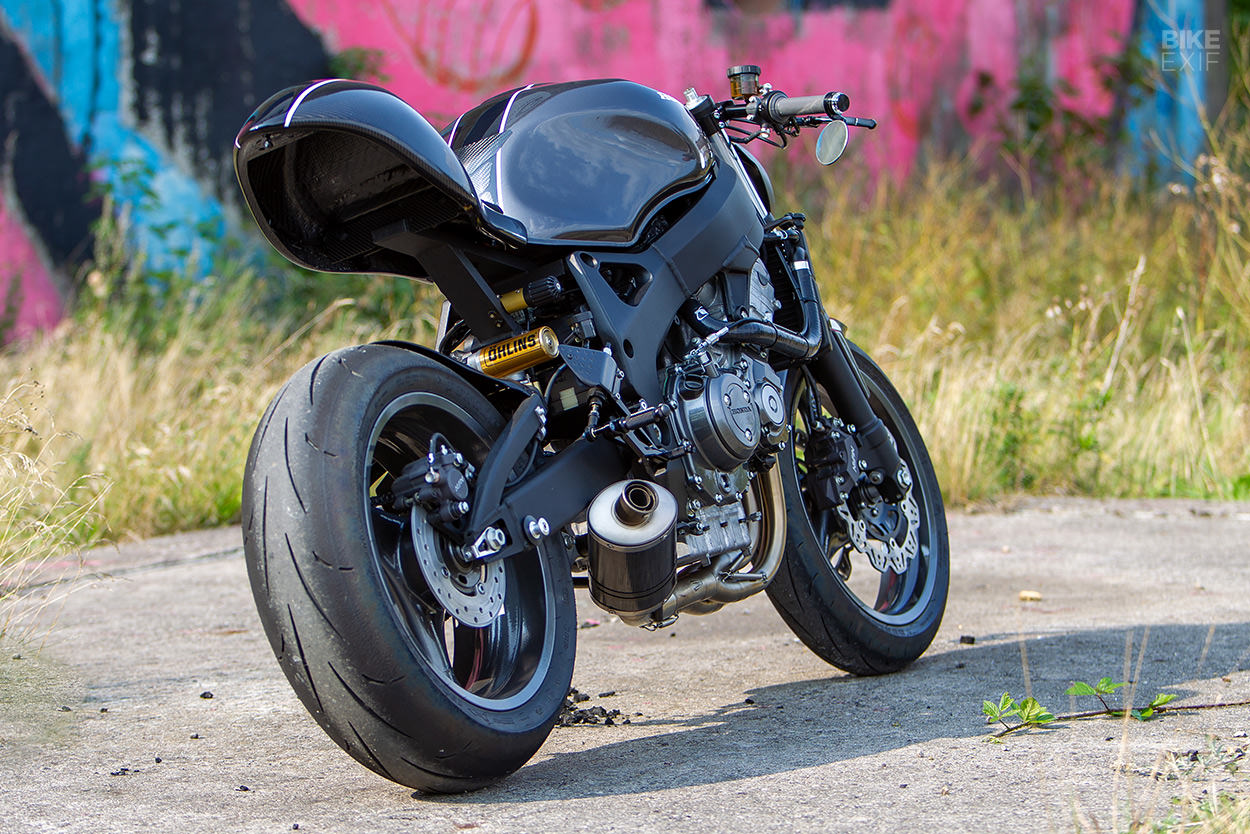
Leo’s once-wrecked Fireblade not only has the perfect stance, but is also well-equipped and weighs in at just 170 kg, wet. But he’s not planning to enjoy it for long. It’s for sale to make space for his next project…
“It’s A GSX-R1100 Slabside,” he says, “planned as a Yoshimura AMA Superbike replica with the same goal as on the Fireblade: make it lighter, faster and cooler looking than stock.”
